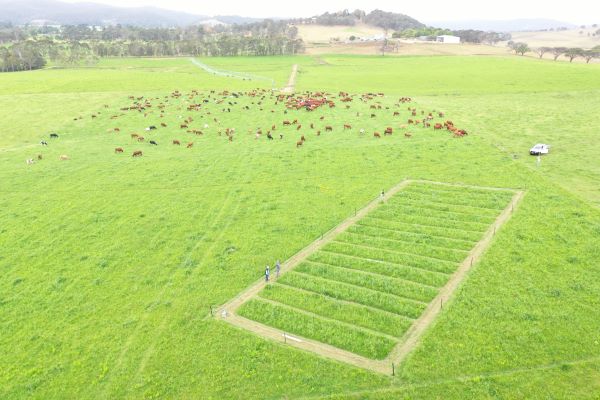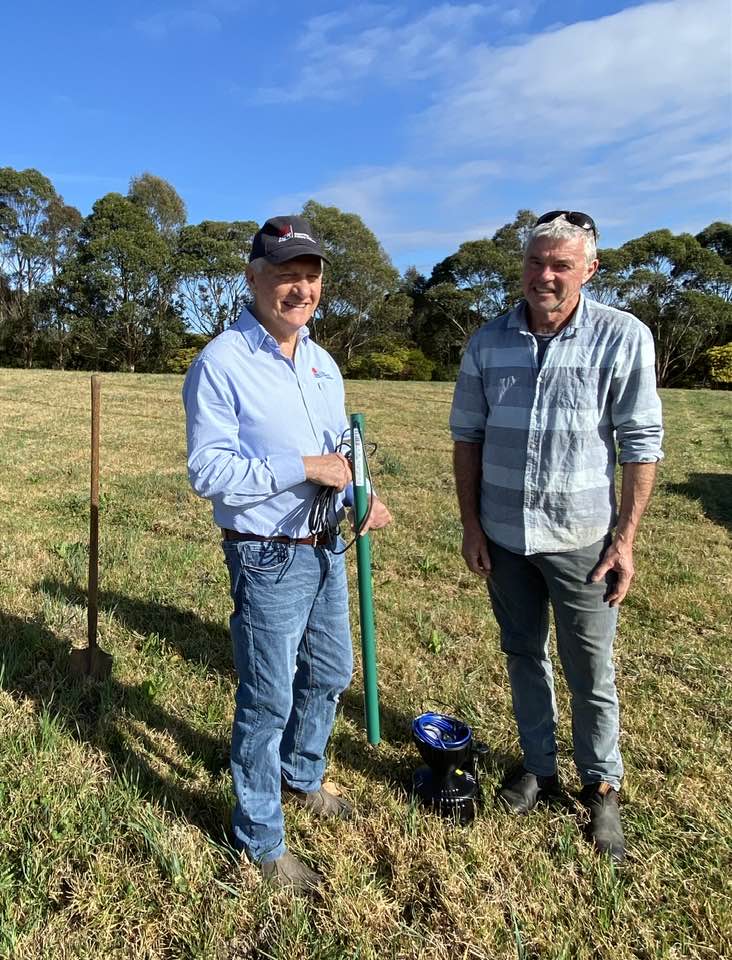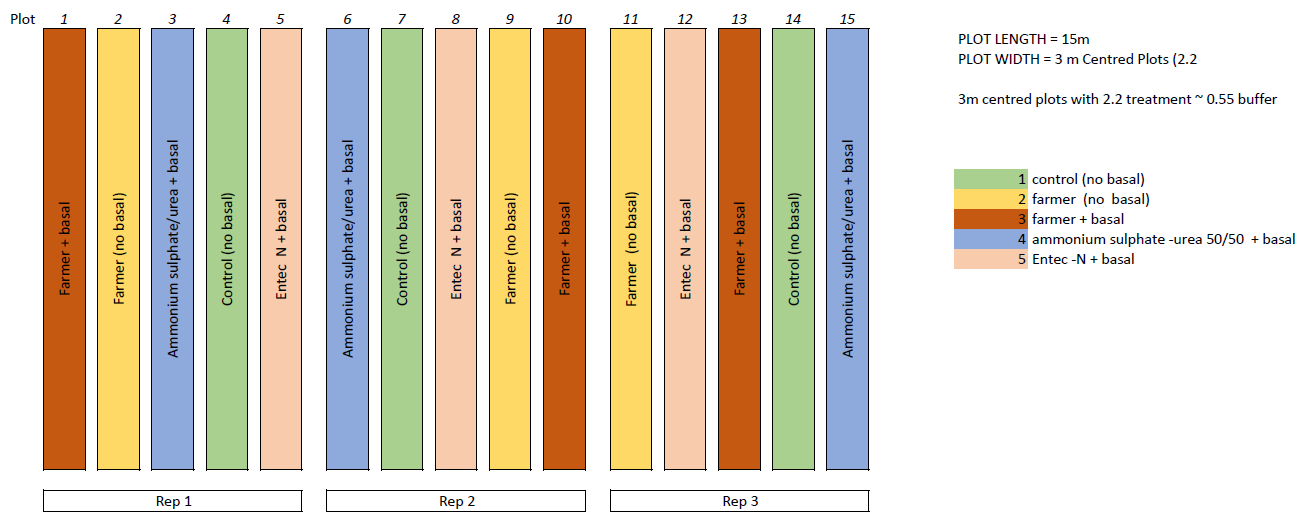
CCC establishes dairy nutrient management trial at Jellat

The Clean Coastal Catchments (CCC) Research project, in collaboration with South East Local Land Services, has set up a dairy nutrient management trial at Jellat Jellat near Bega on the NSW far south coast.
Three different forms of nitrogen based fertiliser, including sulphate of ammonia, standard urea, and urea treated with nitrification inhibitors (also known as an Enhanced Efficiency Fertiliser or EEF), are being tested alongside a zero treatment control site on Rob and Will Russell’s property, Jelgowry.
The EEF used in the trial is an ammonium based fertiliser with added inhibitors that slow the conversion of ammonium to nitrate. The inhibitors suppress the bacteria that convert ammonium to nitrate in the soil. Ammonium is a relatively stable form of nitrogen compared to the more mobile nitrate. If the nitrogen remains in the soil as ammonium for a longer time, this should reduce the amount of nitrogen in the less stable form as nitrate that can potentially leach into creeks and rivers.

CCC Research & Development Officer Luke Jewell and DPI Soil Chemistry researcher Simon Clarendon are monitoring nitrogen and soil moisture movement for each of the trial treatments as part of their research into nutrient use efficiency on dairy pastures.
Luke and Simon have also sought advice from agronomists in the Bega Valley region to ensure the research design is relevant for local farmers, and Bega dairy consultant Dave O’Donnell has been contracted to establish and maintain the trial site while managing pasture and fertiliser inputs.
“Maximising nitrogen use efficiency is about converting the highest proportion of nitrogen fertiliser into productivity, while ensuring the least amount is lost into nearby waterways,” said Luke.
In November, the first post-treatment kikuyu and rye pasture cuts were completed on the trial site, along with soil sampling to track nitrogen content. This will be the first of five sampling events in a sample collection strategy designed to simulate the local dairy grazing cycle.
The aim of the trial is to demonstrate the necessity for soil testing to guide the m
ost profitable and sustainable fertiliser application decisions, focusing on the four R’s:
- Right rate
- Right time
- Right placement
- Right fertiliser source (product choice)
The trial is scheduled for completion in February 2024.
The CCC Research project is delivered by the NSW Department of Primary Industries. The project is funded through the NSW Government’s Marine Estate Management Strategy under the Strategy’s Water Quality initiative. The ten-year Strategy was developed by the NSW Marine Estate Management Authority to coordinate the management of the marine estate.


